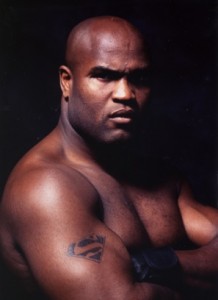Prevention Key to Avoiding Sports-Related Concussions
Pugilism’s popularity rises and falls, but fighting as sport has been a part of American culture for more than 100 years. In the last decade, mixed martial arts (MMA) has overtaken boxing as the fighting sport of choice. The drama surrounding famous fights and fighters is compelling and draws huge crowds.
Fighting is a dangerous sport. Physically demanding and contact heavy, no fighter can expect to stay competitive in the ring for very long. In a sport where knocking your opponent out cold is the objective, fighters are guaranteed to take serious hits. A hit to the head can end a fight. It can also cause a concussion.
Fans and commentators alike lament a fighter who has become “punch drunk” or is suffering from dementia pugilistica. Dementia pugilistica is a form of dementia similar to Alzheimer’s disease, caused by repeated concussions or traumatic blows to the head.

Mixed martial arts fighter Gary Goodridge sustained many concussions during his 14-year fighting career. In 2012, he was diagnosed with early onset of dementia pugilistica at 46.
I recently came across an article, “The Fighter Who Stayed Too Long” that profiled MMA fighter Gary Goodridge, a successful fighter who drew large crowds at home and internationally. But before he hung up his gloves for good, his friends were asking him to stop fighting. They noticed how forgetful he’d become. That his personality had changed. He got angry easier and was impulsive.
Our understanding of brain injury has grown in recent years. We treat concussions more seriously than ever before (though we could treat them still more seriously.) What we used to call punch drunk is now known as Chronic Traumatic Encephalopathy (CTE.) CTE is the progressive degeneration of brain tissue. The symptoms include depression, aggression, memory loss, lack of impulse control, impaired judgment and progressive dementia. At this time, there is no cure.
Goodridge displays all the symptoms of CTE. It’s not altogether surprising. CTE is most common in professional, contact sport athletes and the military. Goodridge participated in 80 total kickboxing and MMA fights over a 14-year career. He suffered 14 total knockout or knockout losses while kickboxing. How many concussions and blows to the head he sustained is unknown, but the number is certainly high.
“I’m still getting used to the idea that I’m not going to be okay ever again. This is my life,” said Goodridge.
Without a post mortem exam, there’s no way to conclusively diagnose Chronic Traumatic Encephalopathy (CTE.) That’s exactly what researchers at the Boston University are doing at the CTE Center. More than 300 athletes and soldiers have pledged to donate their brains and brain stems to the center after death. Hopefully, as we learn more, we’ll find a way to better treat the disease and its effects.
With or without a cure, prevention is the most important step. Contact sports and the people who participate in them must consider the risks. We can make changes to minimize the risk of concussions and brain damage. Sport and competition is valuable, but so are our minds.
